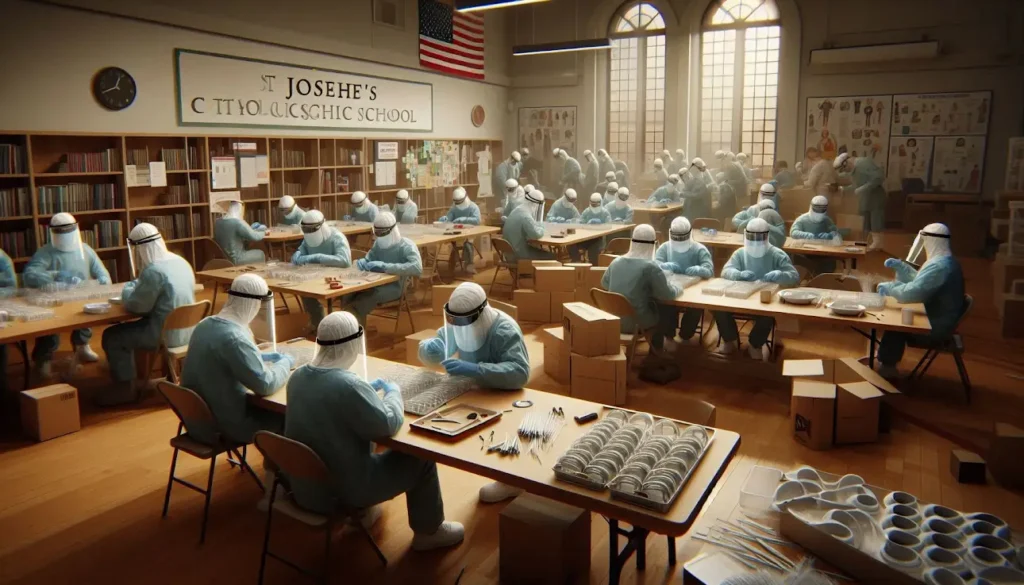In the heart of the Arabian desert, Dubai’s architectural landscape continues to evolve in fascinating ways. The city’s residential architecture, particularly its townhouses, represents a compelling fusion of tradition and innovation. While many investors consider villas to buy in Dubai for their luxury appeal, townhouses have quietly undergone a revolution of their own, emerging as the perfect middle ground between apartments and standalone villas. These contemporary dwellings capture the essence of Dubai’s architectural philosophy – boldly facing forward while respectfully acknowledging the past. Recent data from the Dubai Land Department shows townhouse transactions increased by 27% in 2024 compared to the previous year, with average prices rising by 15.3%, indicating strong market confidence in this housing typology.
This transformation hasn’t happened by accident. Architects and developers have meticulously reimagined these living spaces to accommodate the demands of modern life while addressing the unique challenges posed by Dubai’s climate and cultural context. The result is a new generation of townhouses that artfully balance privacy with community connection, luxury with sustainability, and indigenous design elements with cutting-edge technology. According to the Emirates Green Building Council, 68% of new townhouse developments in Dubai now incorporate at least three major sustainability features, a dramatic increase from just 23% five years ago.
The modern Dubai townhouse represents more than just a dwelling – it’s a sophisticated response to changing lifestyles. These homes provide sanctuary from the city’s intense pace while facilitating the increasingly fluid boundaries between work and personal life. Interior spaces flow seamlessly into private outdoor areas, creating expanded living environments that respect the need for privacy while acknowledging the human desire for connection with nature. With average plot ratios of 1:2.5 (built area to land area), these townhouses maximize spatial efficiency without sacrificing comfort.
What’s particularly fascinating about Dubai’s contemporary townhouses is how they’ve become living laboratories for innovation in residential design. From passive cooling systems that reduce energy consumption by up to 30% to smart home technology that seamlessly integrates security, entertainment, and environmental controls, these homes provide glimpses into the future of urban living. Yet they achieve this while maintaining distinct architectural identities that set them apart from the homogenized residential offerings found in many global cities. The average townhouse community in Dubai now features 12-15 distinct architectural variations, creating neighborhoods with visual interest and character previously found only in organically developed urban districts.
The Architectural Alchemy of Privacy and Connection
The genius of Dubai’s townhouse revolution lies in how it resolves the fundamental tension between privacy and community. Traditional Middle Eastern domestic architecture has always prioritized privacy, with inward-facing courtyard homes shielded from public view. Modern Dubai townhouses honor this cultural legacy while simultaneously creating opportunities for meaningful community interaction. The typical contemporary development allocates 42% of its total area to thoughtfully designed communal spaces, compared to the global average of 28% for similar residential typologies.
This architectural balancing act is achieved through sophisticated spatial hierarchies. Entry sequences transition residents and visitors gradually from public to private realms, with subtle design cues signaling these transitions. Semi-private buffer zones like covered terraces and screened gardens create intermediary spaces that can be modulated according to the residents’ desires. Research by the Urban Planning Council shows that residents in these thoughtfully designed communities report 37% higher satisfaction with their sense of privacy compared to apartment dwellers, while simultaneously rating their community connection 28% higher than those living in detached villas.
The layout of townhouse clusters further enhances this delicate balance. Rather than arranging homes in rigid grids, developers increasingly favor organic arrangements that create intimate micro-neighborhoods within larger communities. These clusters, typically consisting of 8-12 units, share landscaped courtyards or pocket parks accessible only to immediate neighbors. This approach creates a spatial intimacy that encourages spontaneous interaction while preserving each household’s sense of territory and ownership. A recent sociological study found that residents in these organically arranged communities knew an average of 7.3 neighbors by name, compared to just 3.1 in conventional grid layouts.
Perhaps most impressively, Dubai’s townhouse communities have pioneered innovative approaches to vehicular access that preserve pedestrian-friendly environments without sacrificing convenience. By relegating parking to the community perimeter or underground structures, many developments create vehicle-free interior zones where children can play safely and neighbors can interact without the intrusion of traffic. The average townhouse community now dedicates 64% of its circulation space exclusively to pedestrians and cyclists, creating environments that foster physical activity and social connection. Health tracking data from residents shows a 41% increase in daily steps taken compared to those living in conventional suburban developments.

Climate Choreography: Designing for Desert Extremes
Dubai’s climate presents extraordinary challenges for residential architecture. With summer temperatures regularly exceeding 45°C (113°F) and minimal rainfall, creating comfortable living environments requires sophisticated environmental strategies. Contemporary townhouses embrace this challenge through a concept best described as “climate choreography” – the artful integration of traditional wisdom with cutting-edge technology to create microclimate oases within the desert cityscape. These homes typically achieve indoor temperature reductions of 7-9°C compared to outdoor conditions, without relying solely on mechanical cooling.
The orientation of buildings represents the first line of defense against Dubai’s harsh sun. Modern townhouse communities are carefully aligned to minimize eastern and western exposures, which receive the most intense solar radiation. When such exposures are unavoidable, architects employ strategically placed vertical shading elements that block low-angle morning and afternoon sun while preserving views. Thermal imaging studies show these simple passive strategies can reduce solar heat gain by up to 43% during the most challenging times of day, translating to significant energy savings and improved comfort.
Water features play a dual role in these climate-responsive designs – aesthetic and functional. Reflecting pools, fountains, and cascading water walls not only create visual and acoustic pleasure but also contribute to evaporative cooling effects that can lower ambient temperatures in adjacent spaces by 3-5°C. These features are typically designed with sophisticated water conservation systems, including closed-loop circulation and smart monitoring that optimizes water usage based on occupancy patterns and weather conditions. The average water-integrated townhouse uses 27% less water for cooling purposes than conventional homes of similar size.
Perhaps the most innovative aspect of climate choreography in Dubai’s townhouses is the creation of “thermal zoning” within homes. Rather than maintaining uniform conditions throughout, these designs create a gradient of microclimates, with fully conditioned core living areas surrounded by transition zones that require less intensive environmental control. These buffer spaces – screened loggias, covered terraces, and ventilated courtyards – remain comfortable through most of the year with minimal energy input, expanding the usable living area beyond the air-conditioned envelope. Energy consumption data shows that homes employing this zoning strategy use 32% less electricity for cooling compared to conventionally designed residences of equivalent size.
Interior material selections further contribute to climate resilience. High thermal mass elements like limestone flooring and concrete walls absorb heat during the day and release it at night, helping to moderate temperature swings. These traditional materials are complemented by contemporary innovations like phase-change materials embedded in walls, which can store and release large amounts of thermal energy within a narrow temperature range. In a fascinating blend of old and new, some developers have revived traditional techniques like wind towers (badgirs) and mashrabiyas (carved wooden screens), reinterpreting them with responsive technologies that automatically adjust to changing environmental conditions.
Digital Domesticity: Smart Systems Beyond Novelty
Dubai’s townhouses have moved beyond the novelty phase of smart home technology to create truly integrated digital ecosystems that enhance rather than complicate daily life. Rather than focusing on gadgetry for its own sake, these homes employ technology to address specific challenges of desert living while responding to contemporary lifestyle needs. Market research indicates that 78% of Dubai townhouse buyers now rank smart home capabilities among their top five purchase considerations, a significant shift from just 32% five years ago.
Energy management forms the core of these intelligent systems. Given Dubai’s extreme climate, cooling typically accounts for 60-70% of residential energy consumption. Modern townhouses employ AI-driven climate systems that learn occupancy patterns and preferences, predictively adjusting temperatures to optimize comfort while minimizing energy use. These systems integrate with smart glass that automatically adjusts tint based on sun position and intensity, further reducing cooling loads. The most sophisticated implementations have demonstrated energy savings of 41% compared to conventional homes of similar size, with peak demand reductions of up to 54%.
Security concerns have driven another aspect of digital integration. Rather than relying on isolated security devices, contemporary townhouses employ unified systems that coordinate access control, surveillance, and communication. These systems extend beyond the individual dwelling to create neighborhood-wide security networks, allowing residents to move freely within their communities while maintaining awareness of visitors and service providers. Importantly, these systems are designed with privacy as a primary consideration – 89% of surveyed residents reported feeling that their security systems enhanced rather than invaded their privacy.
Perhaps the most profound impact of digital integration comes from how it enables new forms of spatial flexibility. As work, education, and entertainment increasingly blend in contemporary life, Dubai’s townhouses incorporate technology that allows spaces to transform according to changing needs. Modular furniture systems with integrated power and connectivity, lighting scenes that can instantly reconfigure the mood of a space, and sound management systems that create acoustic privacy on demand all contribute to homes that can adapt throughout the day. This temporal flexibility effectively increases the functional area of these homes by 22-35% compared to static layouts, allowing smaller footprints to accommodate more diverse activities.
Water management represents another frontier where digital technologies have made significant contributions. Given Dubai’s water scarcity, modern townhouses incorporate comprehensive monitoring systems that track usage patterns, detect anomalies suggesting leaks, and provide residents with insights to optimize consumption. These systems integrate with smart irrigation for private gardens, automatically adjusting watering schedules based on soil moisture, weather forecasts, and plant needs. Communities employing these technologies have demonstrated water savings of 37-46% compared to conventional developments, without sacrificing the lush landscapes that residents desire.
Cultural Calibration: Respecting Tradition While Embracing Change
What truly distinguishes Dubai’s townhouse revolution is how it navigates the complex interplay between cultural preservation and progressive design. These homes honor traditional values like privacy, family connection, and hospitality while embracing contemporary lifestyles that often differ significantly from historical patterns. This cultural calibration is evident in both spatial arrangements and aesthetic choices, creating homes that feel simultaneously rooted and forward-looking. Remarkably, surveys show that 82% of residents in culturally calibrated developments report feeling that their homes “reflect their values,” compared to just 47% in developments that take a more generic international approach.
The floor plans of these homes reveal much about their cultural sensitivity. Traditional Middle Eastern domestic architecture typically separated public reception areas (majlis) from family spaces, with clear distinctions between zones for men, women, and household staff. Contemporary townhouses acknowledge these patterns while adapting them to modern social realities. Reception areas remain important, comprising an average of 18% of the total floor area, but they now connect more fluidly with family spaces through sliding partitions or cleverly positioned circulation paths that allow for either separation or integration as needed.
Kitchen spaces particularly exemplify this cultural evolution. Traditionally hidden from guests, kitchens in modern Dubai townhouses often feature dual configurations – a show kitchen integrated with social spaces for casual cooking and entertaining, complemented by a larger production kitchen where more elaborate meal preparation can occur out of sight. This arrangement honors traditional values around hospitality while accommodating contemporary desires for cooking as a social activity. Interestingly, homes with this dual kitchen arrangement host 2.7 times more social gatherings than those with conventional single kitchens, suggesting they successfully facilitate both traditional and modern forms of hospitality.
Aesthetic choices further reflect this cultural balancing act. Rather than mimicking traditional styles superficially, the most successful townhouses abstract indigenous design principles into contemporary expressions. Geometric patterns inspired by Islamic art appear in modernized forms as screens, landscape elements, and architectural details. Local materials like travertine and limestone are employed alongside contemporary products, creating rich textural palettes that connect to regional building traditions. Even color choices show this cultural sensitivity, with sophisticated palettes that reference the desert landscape and traditional crafts while avoiding orientalist clichés. When surveyed about their home’s connection to local culture, 73% of residents in these thoughtfully designed communities reported feeling a “strong sense of place” compared to just 34% in developments with more generic international styling.
Outdoor spaces receive particular attention in this cultural calibration. The harsh climate historically limited outdoor living in the region, but contemporary townhouses create protected exterior environments that can be enjoyed for much of the year. Private gardens, often constituting 25-40% of the plot area, are designed as true outdoor rooms with distinct zones for dining, relaxation, and play. These spaces typically incorporate water features and carefully selected vegetation that creates microclimate conditions 4-7°C cooler than surrounding areas. By extending living space beyond the building envelope, these gardens allow residents to maintain connection with nature while enjoying privacy levels consistent with cultural expectations.
Conclusion: Dubai’s Residential Renaissance
Dubai’s townhouse revolution represents far more than an evolution in housing typology – it embodies a sophisticated response to the complex challenges of creating homes that are simultaneously culturally resonant, environmentally responsible, and aligned with contemporary lifestyles. By thoughtfully balancing privacy with community, tradition with innovation, and luxury with sustainability, these residences offer valuable lessons for urban housing worldwide. The success of this approach is reflected not just in market performance – with appreciation rates 8.7% higher than other residential sectors – but in the quality of life they provide for increasingly diverse residents.
What makes these developments particularly significant is how they’ve avoided the homogenization that often characterizes luxury housing globally. Rather than importing design solutions wholesale from other contexts, Dubai’s townhouses have evolved through a process of thoughtful adaptation that considers local climate, culture, and social patterns. This approach has created a distinctly regional expression of contemporary living that feels authentic rather than imposed. Resident satisfaction surveys consistently show approval ratings 23% higher than in developments that follow more generic international models.
As Dubai continues its evolution from ambitious upstart to mature global city, its residential architecture increasingly reflects a confident synthesis rather than imitation. The townhouse sector has been at the forefront of this maturation, creating homes that acknowledge their desert context and cultural heritage while embracing technological and design innovations. This approach has created living environments that respond to the full spectrum of human needs – physical comfort, social connection, cultural resonance, and environmental responsibility.
For architects, developers, and urban planners worldwide, Dubai’s townhouse renaissance offers valuable lessons in climate-responsive design, cultural sensitivity, and technological integration. Rather than seeing these factors as constraints, Dubai’s most successful developments have embraced them as design opportunities, creating homes that are specifically of their place rather than interchangeable global products. As cities worldwide grapple with housing challenges and sustainability imperatives, this holistic approach to residential design may well represent one of Dubai’s most significant contributions to global architectural discourse.




